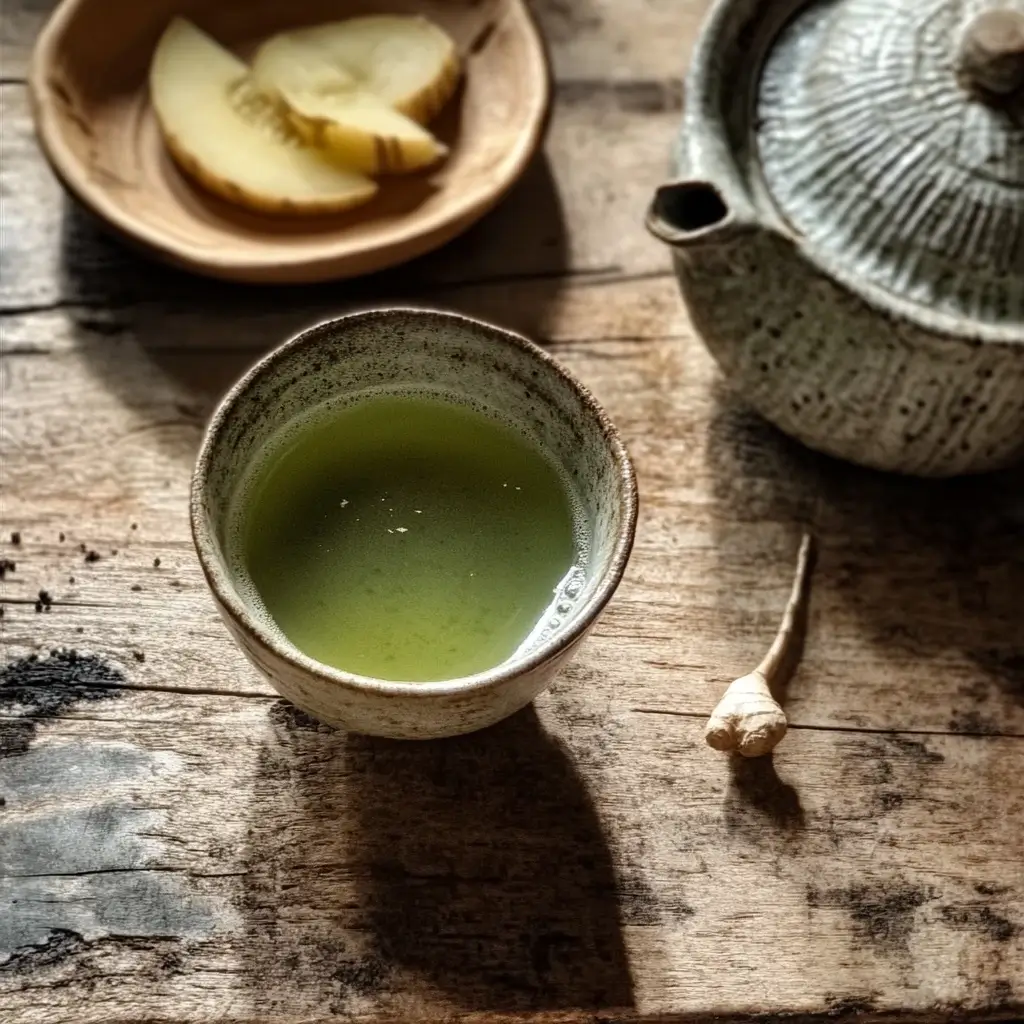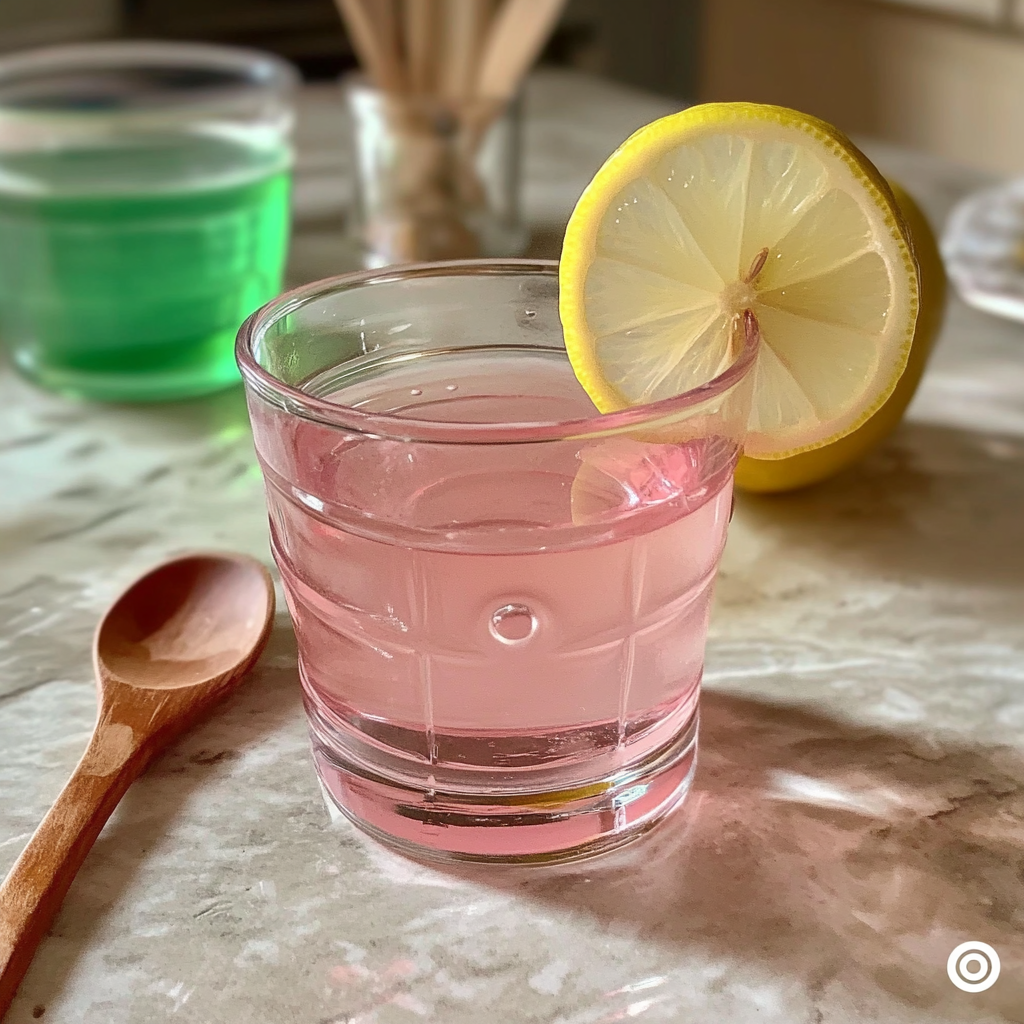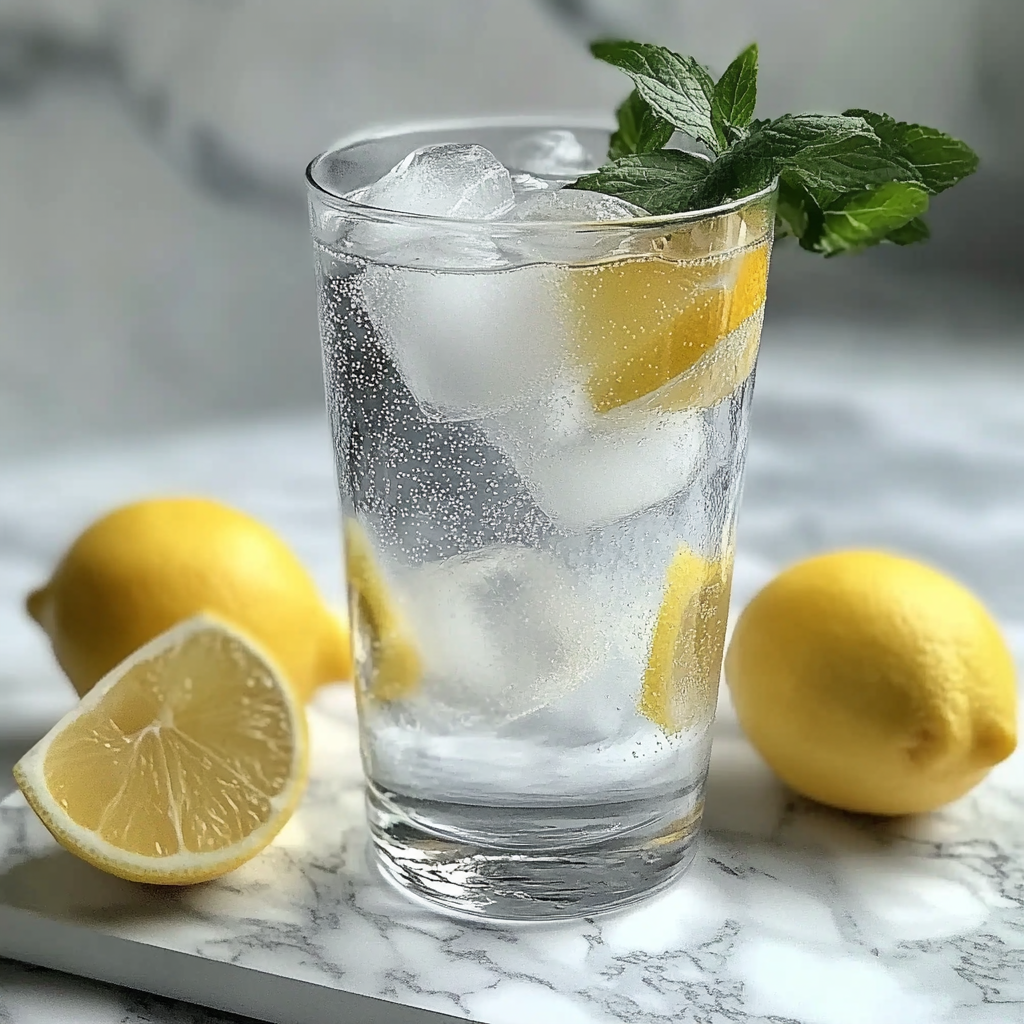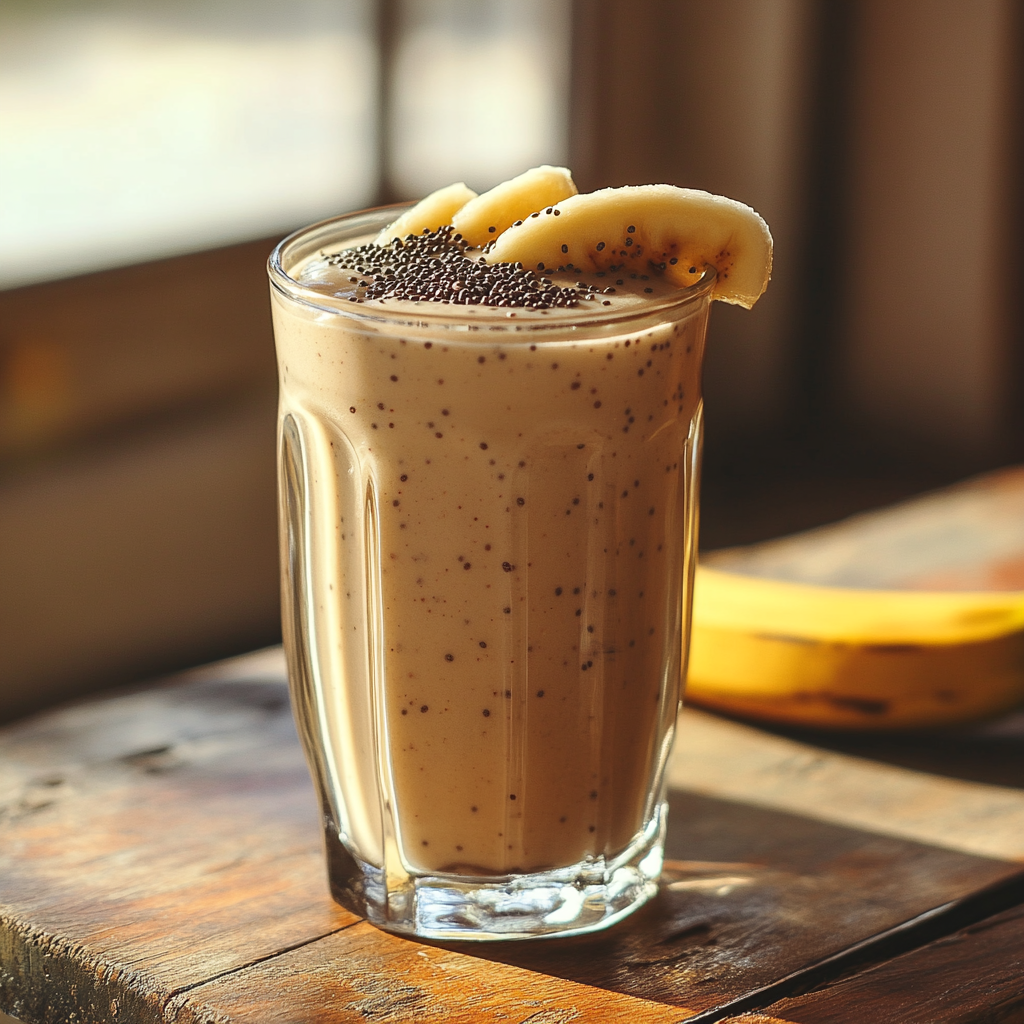Japanese Mounjaro Tea is quickly becoming a popular natural option for those seeking the same wellness goals as the prescription medication Mounjaro, without the needles or side effects. Inspired by time-honored Japanese traditions, this warm herbal infusion blends metabolism-boosting ingredients like green tea, bitter melon, and ginger to help support appetite control, energy levels, and digestion. Unlike synthetic solutions, Japanese Mounjaro Tea offers a daily, food-based ritual that nourishes your body gently while aligning with the same principles behind modern GLP-1 medications: balance, satiety, and metabolic health.
In today’s recipe-focused guide, we’ll explore everything you need to know about Japanese Mounjaro tea, what it is, what makes it different, and how to make it yourself with simple, functional ingredients straight from your kitchen. You’ll also hear a little from my own experience in the kitchen (hi, I’m Katie!), as well as practical tips for incorporating this beautiful tea into your day.
Table of Contents
What is Japanese Mounjaro Tea?
Understanding the Origins of Mounjaro Tea
The term Japanese Mounjaro Tea is inspired by two things: the success of the prescription medication Mounjaro, and the age-old herbal traditions found in Japanese culture. While the original Mounjaro (tirzepatide) is a lab-created GLP-1 medication designed to aid in blood sugar control and weight loss, this tea serves as a natural alternative, rooted in ancient wellness techniques that focus on balancing the body gently through functional herbs and antioxidants.
This isn’t a one-to-one replacement for the pharmaceutical version. Instead, it’s a home-brewed support drink that can be enjoyed daily, with ingredients known to calm appetite, support metabolism, and promote healthy digestion.
The name is catchy, yes, but it’s also functional. Japanese Mounjaro tea uses time-tested elements like green tea, kombucha, and bitter melon, many of which have been associated with weight management benefits for generations.
Print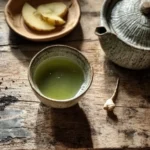
Japanese Mounjaro Tea
- Total Time: 12 minutes
- Yield: 2 servings 1x
Description
Japanese Mounjaro Tea offers a natural way to support metabolism, digestion, and appetite, one warm cup at a time. Simple, real, and effective.
Ingredients
- 1 tsp loose-leaf green tea (sencha or matcha) or 1 green tea bag
- 2–3 thin slices fresh ginger
- 1–2 small slices bitter melon (or ½ tsp dried)
- 1 small strip dried kombu (seaweed)
- ½ tsp grated lemon or yuzu peel
- 1 tsp kombucha or ¼ tsp miso (optional, for gut health)
- 2 cups filtered water
Instructions
- Heat 2 cups of water to about 175–185°F (just before boiling).
- In a teapot or large mug, add green tea, ginger, bitter melon, kombu, and citrus peel.
- Pour hot water over the ingredients and let steep for 5–7 minutes.
- Strain and pour into a mug.
- If using kombucha or miso, stir it in once the tea cools slightly (warm, not hot).
- Sip warm and enjoy the benefits.
Notes
- Drink before meals or in the morning for best results.
- Store leftover tea in the fridge for up to 2 days. Serve chilled or reheat gently.
- Avoid adding sugar or dairy to preserve natural digestive benefits.
- Prep Time: 5 minutes
- Cook Time: 7 minutes
- Category: Beverage
- Method: Steeping
- Cuisine: Japanese-Inspired
Nutrition
- Serving Size: 1 cup
- Calories: 3 kcal
- Sugar: 0 g
- Sodium: 0 g
- Fat: 0 g
- Saturated Fat: 0 g
- Unsaturated Fat: 0 g
- Trans Fat: 0 g
- Carbohydrates: 0 g
- Fiber: 0 g
- Protein: 0 g
- Cholesterol: 0 mg
Recommended
How the Japanese Approach Natural Weight Management
Unlike crash diets or synthetic pills, traditional Japanese wellness focuses on moderation, nourishment, and daily ritual. It’s not uncommon for Japanese diets to include teas rich in catechins and polyphenols, which are shown to support the body’s natural ability to burn fat.
In Japanese households, tea is often paired with meals not just for flavor, but to help aid digestion and prevent overeating. This lifestyle aligns closely with the goals behind medications like Mounjaro, but instead of targeting blood sugar directly through synthetic compounds, Japanese Mounjaro tea offers a gentler, daily approach to supporting your body with nutrient-dense, natural ingredients.
Check out Natural Mounjaro Recipe to explore more ways to support your wellness journey naturally.
What Makes Japanese Mounjaro Tea Unique?
Ingredients Inspired by Nature and Tradition
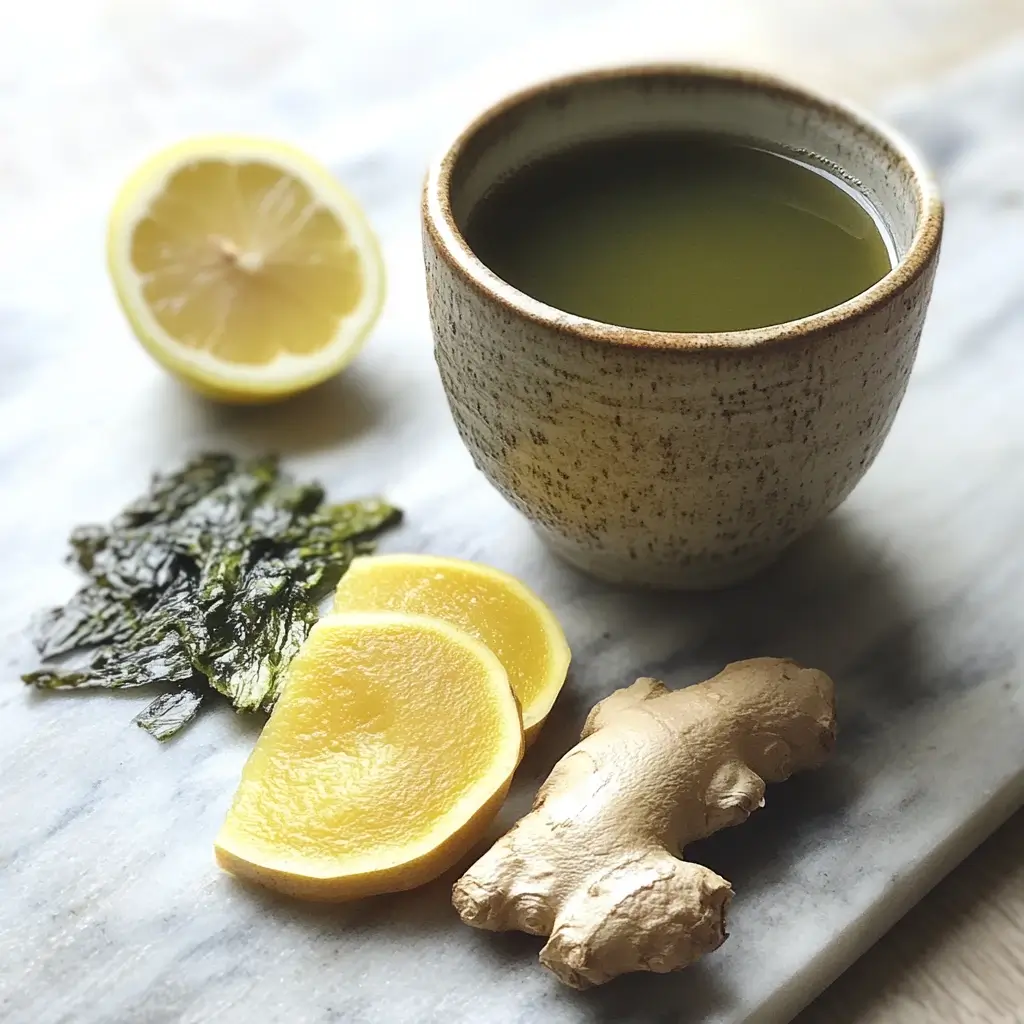
Unlike many trendy teas that rely on a single herb or processed extracts, Japanese Mounjaro Tea brings together a purposeful blend of traditional Japanese ingredients, each chosen for their natural wellness properties. This tea isn’t just about flavor—it’s about function, using whole-food components to help your body feel fuller, more energized, and less prone to cravings.
Here are a few of the key ingredients typically used in a Japanese Mounjaro tea blend:
| Ingredient | Purpose |
|---|---|
| Green Tea (Sencha or Matcha) | Rich in catechins (especially EGCG) that support fat oxidation and energy |
| Bitter Melon (Goya) | Naturally supports blood sugar balance and appetite control |
| Kombu or Seaweed Extract | Mineral-dense and supports digestion and detoxification |
| Ginger | Warms the body and aids in gut motility |
| Lemon or Yuzu Peel | Adds flavor and natural vitamin C boost |
| Fermented Kombucha Base (optional) | Supports gut health and enhances tea’s probiotic potential |
This thoughtful combination reflects Japan’s cultural belief that food can be both nourishing and medicinal. Each sip of this tea aims to support your natural metabolism without any synthetic additives, just as traditional teas have been doing for centuries in Japanese households.
Comparison to Mounjaro Medication (GLP-1 Analogy)
You might be wondering: “If Mounjaro is a pharmaceutical, how can tea possibly offer similar support?”
That’s a great question—and while Japanese Mounjaro Tea isn’t a drug and doesn’t alter hormones like GLP-1 receptor agonists do, it works alongside your body’s natural processes in a way that mimics the outcomes many people are looking for:
| Function | Mounjaro Medication | Japanese Mounjaro Tea |
|---|---|---|
| Suppresses Appetite | Alters GLP-1 signals in the brain | Uses bitter compounds like bitter melon to naturally reduce hunger |
| Balances Blood Sugar | Pharmacological glucose control | Helps reduce post-meal sugar spikes using green tea & ginger |
| Aids Digestion | Not a direct function | Contains fermented and warming ingredients to support gut movement |
| Energy Support | Variable | Catechins and L-theanine provide clean energy and mental clarity |
So, while this tea is not a direct substitute for Mounjaro, it does offer a natural daily routine that aligns with many of the same lifestyle goals: feeling full longer, digesting better, and supporting your health without synthetic intervention.
Learn more about Best Natural Zepbound Recipe for a deeper dive into natural weight management drinks.
By choosing Japanese Mounjaro tea, you’re choosing a gentle daily ritual rooted in ancient wisdom—a warm reminder that support doesn’t always come in a prescription bottle.
Don’t miss our Zepbound Natural Recipe to explore more gut-friendly beverages you can rotate in your wellness routine.
Key Ingredients in Japanese Mounjaro Tea Explained
| Ingredient | Function & Benefit |
|---|---|
| Green Tea (Sencha/Matcha) | Boosts metabolism, supports fat burning (EGCG), balances blood sugar |
| Bitter Melon | Reduces appetite naturally, mimics GLP-1 effect, supports glucose control |
| Ginger Root | Aids digestion, reduces bloating, improves circulation |
| Kombu (Seaweed) | Adds minerals like iodine, supports thyroid and metabolism |
| Yuzu or Lemon Peel | Provides antioxidants and vitamin C, enhances digestion |
| Kombucha or Miso (Optional) | Adds probiotics, supports gut health and satiety (stir into cooled tea) |
These six ingredients create a blend that supports natural weight loss, digestion, and energy, exactly what people look for in a Japanese Mounjaro Tea.
Japanese Mounjaro Tea Recipe (Step-by-Step)
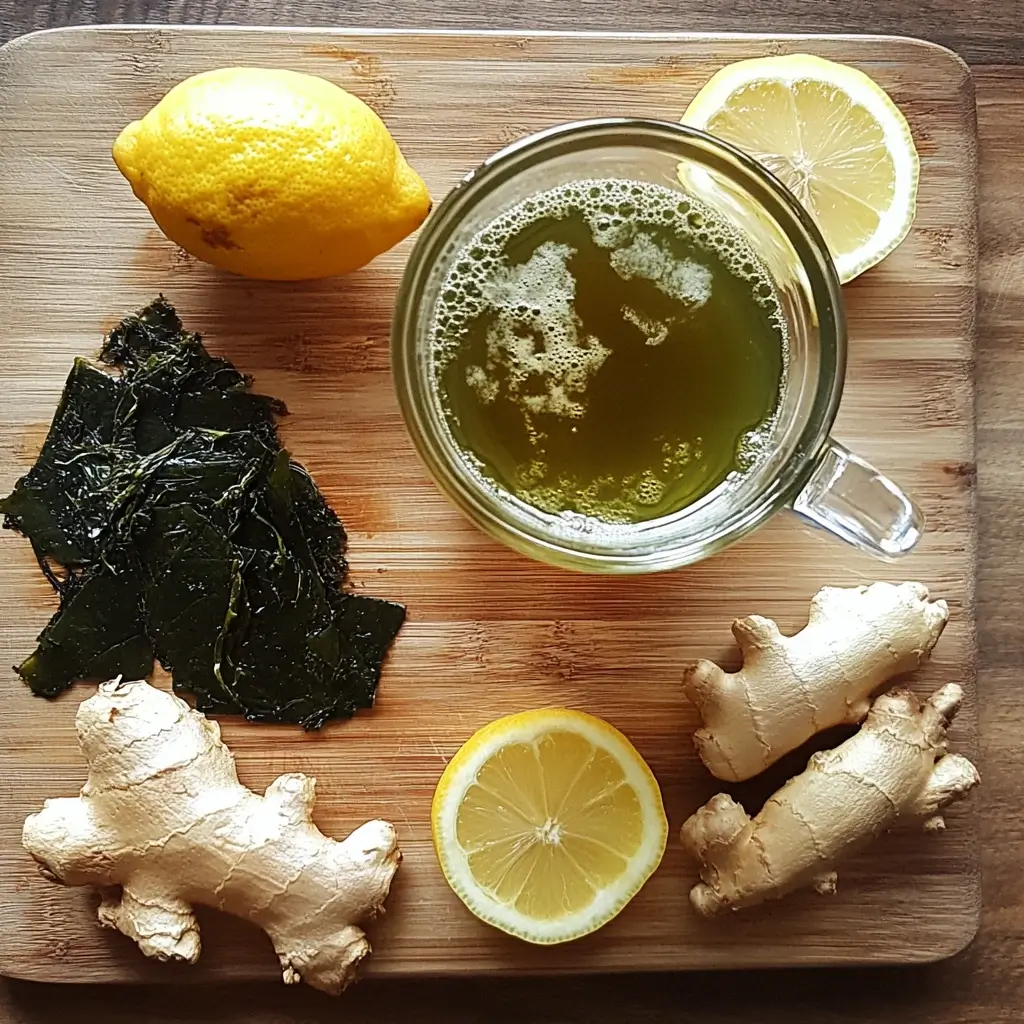
This soothing, metabolism-supporting tea blends Japanese tradition with natural weight wellness. It’s simple to make and perfect for mornings or a calming afternoon reset.
Tools You’ll Need
- Tea kettle or saucepan
- Tea strainer or infuser
- Mug or teacup
- Knife & cutting board
- Optional: whisk (for miso) or stirrer
Step-by-Step Instructions
Step 1 – Boil the Water
Heat 2 cups of filtered water until it reaches a gentle simmer. Let cool slightly (around 175–185°F for green tea).
Step 2 – Add Base Ingredients
In a teapot or heatproof jar, add:
- Green tea
- Ginger
- Bitter melon
- Kombu
- Lemon or yuzu peel
Let steep for 5–7 minutes, covered.
Step 3 – Strain & Serve
Remove all solids using a fine mesh strainer. Pour the tea into your favorite mug.
Step 4 – Add Probiotic (Optional)
Once the tea has cooled to warm (not hot), stir in a teaspoon of kombucha or a small dab of miso for gut-friendly benefits.
How Japanese Mounjaro Tea Supports Gut Health and Hormones
Why Your Gut Plays a Big Role in Weight Loss
Most people focus on calories, carbs, and workouts—but your gut health can actually have more influence on your weight than you think. A healthy gut microbiome helps regulate:
- Appetite signals (like ghrelin and leptin)
- Blood sugar response
- Nutrient absorption
- Hormonal balance (especially insulin and estrogen)
When your gut is inflamed, imbalanced, or lacking good bacteria, it can slow digestion, increase cravings, and cause bloating—all of which make it harder to lose weight.
How Japanese Mounjaro Tea Supports the Gut
Japanese Mounjaro Tea contains ingredients known to gently support gut function:
| Ingredient | Gut Benefit |
|---|---|
| Ginger | Reduces inflammation, soothes digestion |
| Kombu (Seaweed) | Adds prebiotic fiber, supports bowel regularity |
| Citrus Peel | Stimulates bile flow, helps fat digestion |
| Bitter Melon | Aids pancreatic enzyme production, supports gut lining |
| Kombucha/Miso | Probiotic-rich, balances intestinal flora (optional) |
These ingredients don’t just help you feel better after meals—they also help create a healthier environment for your body to burn fat more efficiently and keep your hormones steady.
What About Hormones? Does This Tea Help?
Yes—indirectly. When your digestion is calm, your stress hormones (like cortisol) go down, and blood sugar levels remain more stable. This can lead to:
- Reduced cravings for sugar and carbs
- Fewer mood swings or energy crashes
- Less abdominal weight gain (which is often linked to insulin resistance)
So while Japanese Mounjaro Tea isn’t a hormone therapy, it does help create balance in the systems that influence your weight, naturally and gently.
Who Might Benefit Most from This Tea?
This tea can be especially helpful for:
- People managing blood sugar issues
- Anyone dealing with digestive discomfort or bloating
- Women over 35 facing hormonal shifts
- Those seeking a non-pharmaceutical wellness approach
How Long Before You Notice a Difference?
If you drink Japanese Mounjaro Tea daily, many people notice:
- Less bloating in 2–3 days
- Better energy or fewer cravings in 5–7 days
- Subtle weight shift or appetite change in 10–14 days
Final Tip:
If you’ve struggled with bloating, sluggish digestion, or cravings that seem to appear out of nowherethis tea might be the easiest and most enjoyable way to reset your gut, restore balance, and feel in control again.
Benefits of Japanese Mounjaro Tea for Weight Loss
How It May Support Metabolism Naturally
When it comes to weight loss, the goal isn’t just about cutting calories—it’s about creating a healthy internal environment where your metabolism can thrive. Japanese Mounjaro Tea supports this naturally through a unique mix of thermogenic herbs, antioxidants, and blood-sugar-friendly ingredients.
Let’s break it down:
- Green Tea Extracts (like EGCG) boost fat oxidation and gently raise metabolic rate, especially when paired with light activity
- Ginger and bitter melon improve circulation and stimulate the digestive system, helping your body process food more efficiently
- Seaweed components like kombu are rich in iodine, which is important for thyroid function—a key player in your metabolic system
These natural components make Japanese Mounjaro Tea more than just a cozy beverage. They actively contribute to a body environment that supports sustainable weight management, especially when consumed consistently.
Plus, unlike stimulant-based weight loss aids, this tea doesn’t cause crashes or jittery side effects. It’s gentle enough for most people to enjoy daily as part of their self-care and wellness habits.
The Role of Herbal Catechins, Bitters, and Fermentation
Japanese Mounjaro Tea shines because of the synergistic power of three specific plant-based mechanisms:
1. Catechins (from Green Tea)
These antioxidants are known for their ability to:
- Reduce oxidative stress (which can cause inflammation and fat storage)
- Improve insulin sensitivity
- Support fat metabolism, especially abdominal fat
Catechins, especially EGCG, have been studied for their potential to increase energy expenditure and reduce appetite, acting similarly (though milder) to GLP-1 mimicking agents like Mounjaro.
2. Bitters (from Bitter Melon)
Bitter compounds trigger a response in your gut that tells the brain “I’m full”—a process very similar to what Mounjaro achieves pharmacologically.
They also:
- Help regulate blood sugar after meals
- Stimulate digestive enzyme production
- Help prevent snacking and cravings
3. Fermentation (Optional Kombucha or Miso Base)
Adding fermented ingredients, like a kombucha starter or a touch of miso, gives the tea gut health benefits, including:
- Promoting healthy gut flora (which is linked to lower body weight)
- Helping with bloating and digestion
- Supporting nutrient absorption for better results from your meals
Together, these ingredients work to create a holistic tea that addresses more than one angle of weight loss: digestion, cravings, metabolism, and mental clarity.
Looking for inspiration? Try Blue Salt Trick for Men Ingredient for another unique take on natural weight-balancing drinks.
By sipping Japanese Mounjaro Tea, you’re choosing a blend that taps into the wisdom of herbal science and the elegance of Japanese culture, making your health journey a bit more peaceful, flavorful, and sustainable.
How to Get the Most Out of Japanese Mounjaro Tea
The Best Times to Sip for Natural Support
If you’re using Japanese Mounjaro Tea to gently support your wellness or weight loss goals, timing your tea can make a noticeable difference. This isn’t just about what you drink—it’s when you drink it, too.
Here’s how I’ve found it works best:
- Before Breakfast: A warm cup before your first bite can help wake up digestion and gently ease your body into the day without shocking your system.
- Midday, Before Lunch: This is my go-to window. Drinking the tea around 20–30 minutes before a meal helps calm hunger and keeps me from overloading my plate.
- Mid-Afternoon (2–4 PM): This is when my energy usually dips. A warm mug of Japanese Mounjaro Tea helps with mental clarity and reduces snacky temptations, without the coffee crash.
Avoid it too late in the evening, green tea contains some caffeine, and you don’t want it interfering with your sleep cycle.
What to Eat with Japanese Mounjaro Tea
Pairing this tea with smart, light foods can amplify its benefits. You don’t need to overhaul your diet, just a few thoughtful combos can support fullness.
| When You Drink It | Try Pairing With |
|---|---|
| Morning | Scrambled eggs, banana with nut butter |
| Pre-lunch | Steamed edamame, veggie sticks with hummus |
| Afternoon | Handful of mixed nuts or a boiled egg |
These aren’t meant to be full meals, they’re simple supportive snacks to keep your body steady and your energy stable.
Make It a Daily Ritual
Like anything worth doing, results from Japanese Mounjaro Tea come with consistency. Don’t expect overnight changes. Instead:
- Drink the tea once or twice a day
- Stick with it for at least two weeks to feel the rhythm
- Hydrate well in between, your body thrives on water just as much as it does on herbal support
Pro tip from my own kitchen: I brew mine in a batch and keep it in a thermos, so I have it ready no matter how wild the day gets.
FAQs About Japanese Mounjaro Tea
Does Japanese Mounjaro Tea Really Help With Weight Loss?
It’s a natural tea inspired by Japanese ingredients like green tea, bitter melon, and ginger, made to support metabolism, appetite control, and digestion.
What is Japanese Mounjaro drink?
Green tea (like sencha or matcha) and bitter melon tea are commonly used in Japan to support fat burning and balance digestion.
Can Anyone Drink This Tea?
Most people can enjoy this tea without any issues. It’s caffeine-light and made with whole, natural ingredients. That said, if you’re pregnant, nursing, or managing a medical condition (especially thyroid or blood sugar-related), it’s always best to check with your doctor first, just to be safe.
What tea do Japanese drink for weight loss?
In Japan, many people turn to sencha (green tea) and oolong tea for their natural fat-burning properties. Some also drink kombu-infused teas and bitter melon tea, both of which help support digestion and balance appetite. Japanese Mounjaro Tea draws inspiration from these traditions by blending them into one powerful cup.
Is there a natural equivalent to Mounjaro?
While there’s no exact natural substitute for the medication Mounjaro, some ingredients, like bitter melon, ginger, and green tea catechins (EGCG)—can mimic certain effects, such as reduced appetite, better digestion, and improved insulin response. These ingredients are what make Japanese Mounjaro Tea a compelling natural option for those looking for everyday support.
Does the Mounjaro drink really work?
Many people report feeling more full, less bloated, and more energized when drinking Japanese Mounjaro Tea daily. It’s not a quick fix, but when paired with balanced meals and healthy habits, it offers a gentle, consistent way to support your goals naturally. The key is consistency and treating it as a ritual, not a miracle.
Conclusion
Choosing wellness doesn’t have to be overwhelming. With something as simple and soothing as a cup of Japanese Mounjaro Tea, you can support your body in a natural, sustainable way—without complicated routines or expensive products. This tea isn’t a trend or a quick fix; it’s a gentle ritual rooted in tradition, crafted for real life.
Whether you’re just starting your health journey or you’re looking to add something comforting to your daily rhythm, this tea offers a meaningful way to show up for yourself. One cup at a time, you’re choosing nourishment, balance, and intention.
And that’s something worth sipping to.
Don’t miss our Japanese Mounjaro Recipe if you’re ready to explore more from this natural approach to wellness.
Don’t miss follow us on Medium for more clean recipes, wellness drinks, and natural lifestyle tips you can actually use every day.
